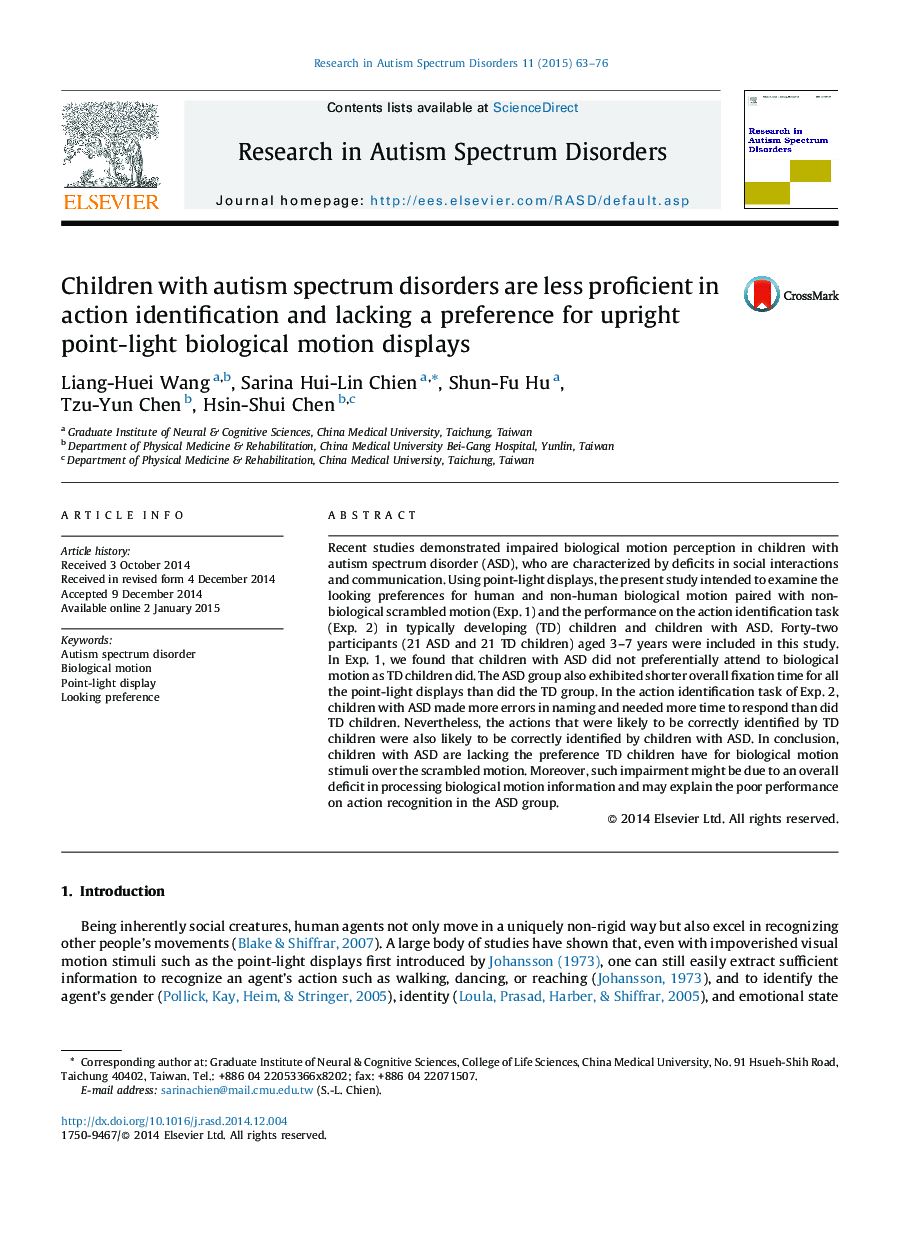| کد مقاله | کد نشریه | سال انتشار | مقاله انگلیسی | نسخه تمام متن |
|---|---|---|---|---|
| 370006 | 621834 | 2015 | 14 صفحه PDF | دانلود رایگان |
• 3–7-year-old TD children preferred upright biological motion PLDs to scrambled ones.
• Age-matched children with ASD did not prefer upright biological motion PLDs.
• ASD group made more errors and needed more time to identify human actions in PLDs.
• Of the 12 human actions, what was easy/hard for TD was also true for ASD group.
Recent studies demonstrated impaired biological motion perception in children with autism spectrum disorder (ASD), who are characterized by deficits in social interactions and communication. Using point-light displays, the present study intended to examine the looking preferences for human and non-human biological motion paired with non-biological scrambled motion (Exp. 1) and the performance on the action identification task (Exp. 2) in typically developing (TD) children and children with ASD. Forty-two participants (21 ASD and 21 TD children) aged 3–7 years were included in this study. In Exp. 1, we found that children with ASD did not preferentially attend to biological motion as TD children did. The ASD group also exhibited shorter overall fixation time for all the point-light displays than did the TD group. In the action identification task of Exp. 2, children with ASD made more errors in naming and needed more time to respond than did TD children. Nevertheless, the actions that were likely to be correctly identified by TD children were also likely to be correctly identified by children with ASD. In conclusion, children with ASD are lacking the preference TD children have for biological motion stimuli over the scrambled motion. Moreover, such impairment might be due to an overall deficit in processing biological motion information and may explain the poor performance on action recognition in the ASD group.
Journal: Research in Autism Spectrum Disorders - Volume 11, March 2015, Pages 63–76
